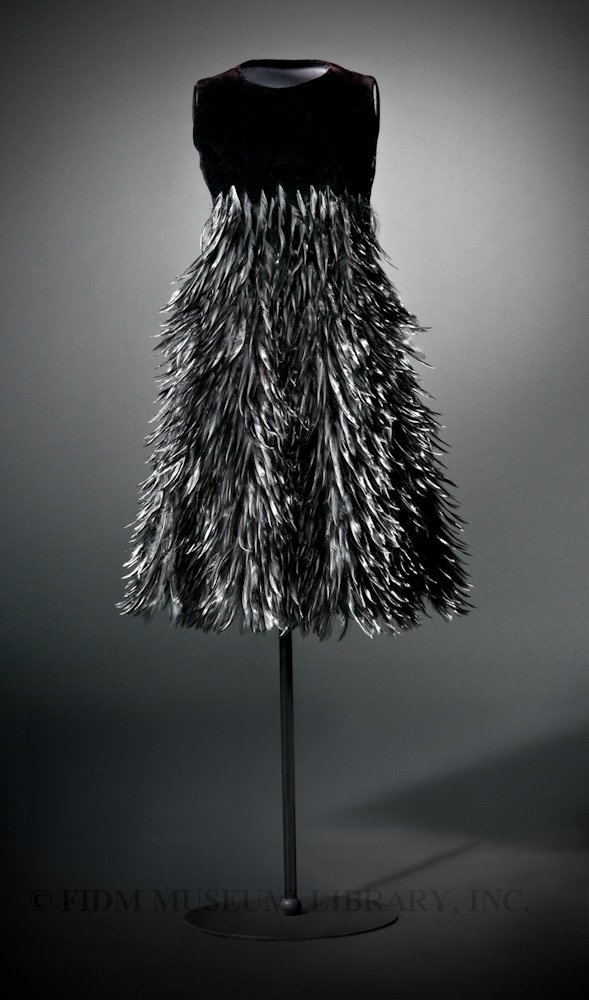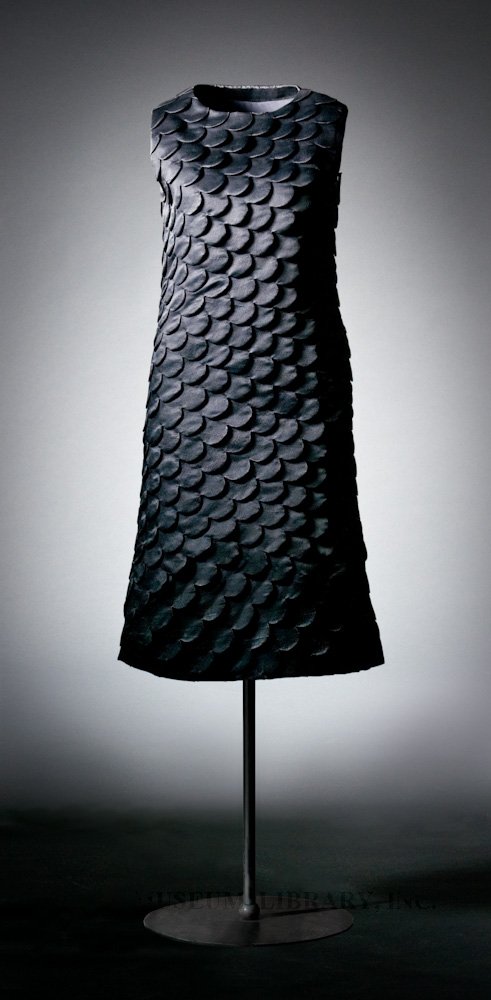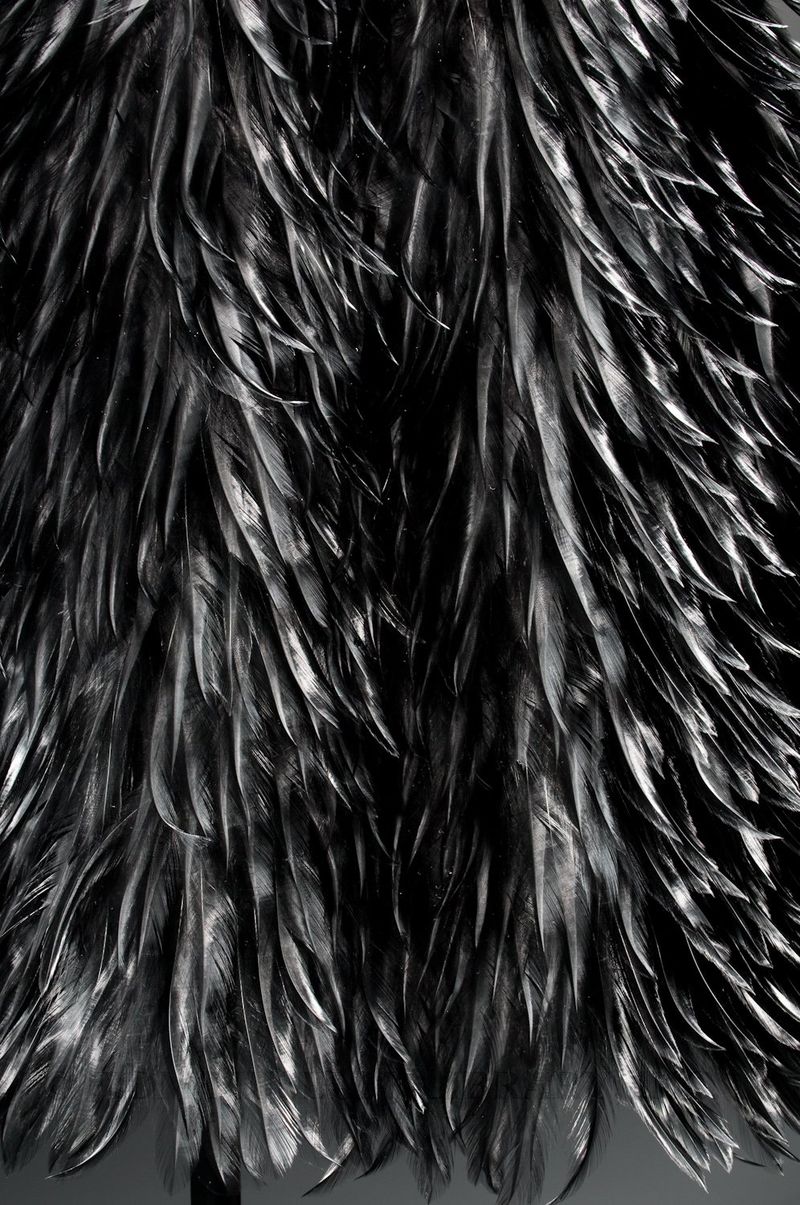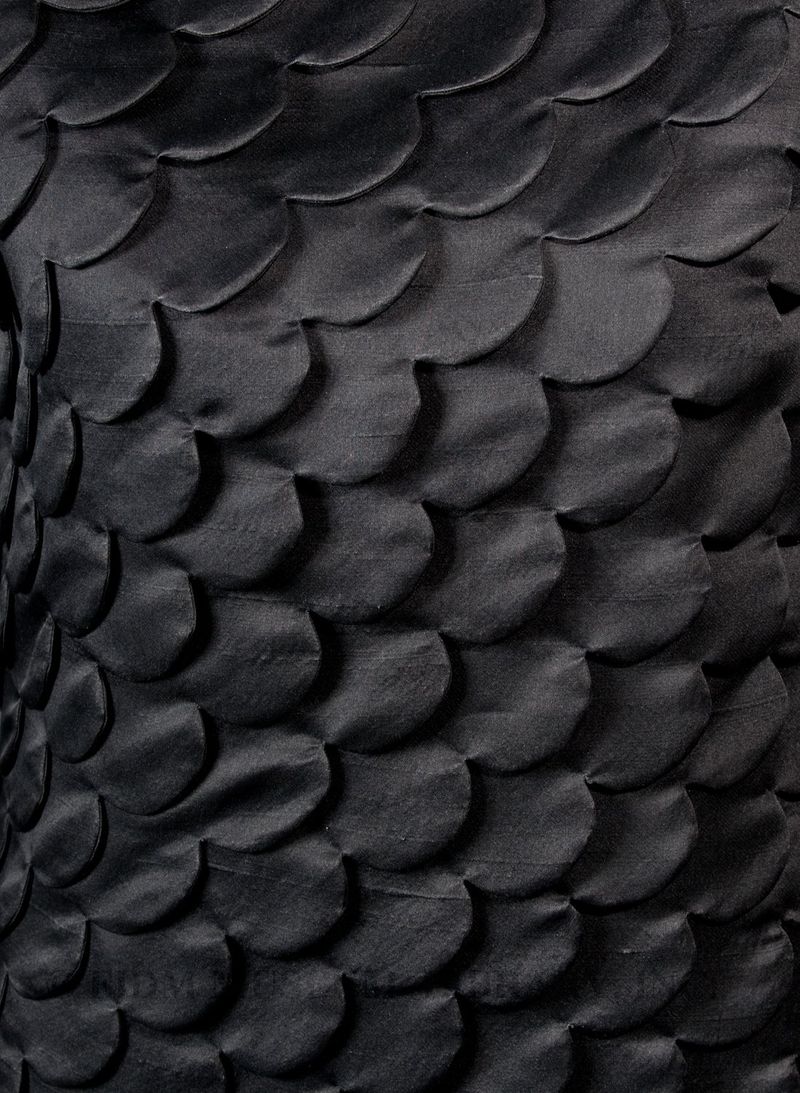Couturier Hubert de Givenchy was born on this day in 1927. Now retired, Givenchy is one of the last living couturiers to have learned his art during the golden age of the haute couture. His training began in 1945 when he took a position with Jacques Fath. By December 1951, when Givenchy opened his own couture house, he had trained under Jacques Fath, Robert Piguet, Lucien Lelong and Elsa Schiaparelli. Vogue highlighted Givenchy's February 1952 debut collection, calling it "one of the most news-worthy happenings in Paris this spring."1 The collection was notable for its emphasis on separates, including the crisp white Bettina blouse, modeled by Bettina Graziani. A version of the Bettina blouse is seen in this March 1952 Life magazine article on Givenchy's debut collection.
 Evening dress
Evening dress
Hubert de Givenchy
Autumn-Winter 1968-69
Silk velvet, cockerel feathers
77.116.14
Gift of Mrs. Alfred Bloomingdale
Givenchy's rapid success led him to both a muse and a mentor. In 1953, Givenchy met Cristobal Balenciaga, the couturier he respected above all others. In a 2007 interview, Givenchy called Balenciaga "my religion," declaring, "Since I'm a believer, for me there's Balenciaga and the good Lord."2 Balenciaga mentored the young designer, sharing both his best employees and his knowledge of their shared art. When Balenciaga retired in 1968, he encouraged his distraught clients to transfer their loyalty to Givenchy.
In the same year he met Balenciaga, Givenchy received a visit from the emerging movie star Audrey Hepburn. In 1953, the year Roman Holiday was released, Hepburn was at the beginning of her career. She wasn't nearly as well-known as Katharine Hepburn, so Givenchy assumed that an appointment with "Miss Hepburn" would mean a meeting with the star of The African Queen. Instead, the sprightly young Audrey Hepburn appeared, and a friendship began that lasted until Hepburn's death. Givenchy designed Hepburn's personal wardrobe, also costuming her in many films, including Sabrina, Funny Face, and Breakfast at Tiffany's.
By the late 1960s, fashion consumers and critics were sometimes underwhelmed by Givenchy's quiet good taste and insistence on quality over novelty. In comparison to the emergent generation of youth-oriented designers like Mary Quant, André Courrèges, and Betsey Johnson, Givenchy's haute couture creations probably seemed out of touch. However, even the critics who complained that Givenchy wasn't of the moment acknowledged the quality of his designs. In 1968, a New York Times reporter wrote that Givenchy's “evening clothes…have a perfection that not many designers show these days.”3
In retrospect, Givenchy's designs have a timeless appeal lacking in trendier late 1960s designs. The black evening dresses featured here retain their elegance and could easily be worn today. The September 1968 issue of Harper's Bazaar described this Givenchy dress "as the early Christmas tree, a delicate triangle of a black coq feather dress, trimmed into the fluting curves of a fir tree, springing from a small black velvet bodice." The feathers flutter with movement, constantly catching and reflecting light, similar to needles in a coniferous forest. To create this effect, feather tips were individually measured, cut, sewn, and glued onto the silk velvet.
 Evening dress
Evening dress
Hubert de Givenchy
Autumn-Winter 1967-68
Silk organza
2006.116.4
Gift of Mrs. Alfred Bloomingdale
Another late '60s Givenchy dress is equally impressive. Deceptively simple, this evening sheath is constructed from double-layer, bias-cut strips of silk organza spiraling around a foundation of china silk. Like all garments cut on the bias, this design necessitated a liberal use of fabric. Many of the strips are long enough to encircle the dress multiple times during their descent from neckline to hem. Like feathers, these curved scallops impart a sense of movement even when the wearer is standing still.
1 "Fashion: Paris Collections: First Report—It Begins at the Waistline." Vogue Mar 1, 1952: 129.
2 Murphy, Robert. “Sitting Down With Givenchy” WWD July 3, 2007.
3 Emerson, Gloria. "Cardin and Givenchy Showings Present a Study in Contrasts." New York Times 2 Aug. 1968: 16.



